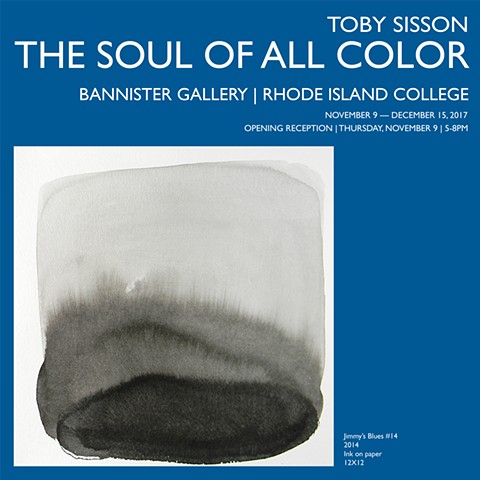The Soul of All Color

From the exhibition essay by Kimberly Juanita Brown, author of The Repeating Body: Slavery’s Visual Resonance in the Contemporary, Duke University Press, 2015:
:: Abstraction assists the imagination by requiring something more of the viewer. In this, Toby Sisson creates with and against the grain of the viewer’s expectation. Her art is figurative without figures, precise while playfully amorphous, lyrical and performative. “I want to be able to make images that have multiple reads,” Sisson has said. And abstract multiplicity is the manner and mode of her aesthetic trajectory.
The method of encaustic painting and printmaking and the melted wax process it engages provides Sisson with a well-woven tactile field through which to stake her artistic claim. Her work recalls both the three-dimensionality of sculpture and the grainy, yet figurative gestures of landscape photography, it evokes the prescient call that abstraction affords the artist courageous enough to pursue its retrieval. With The Soul of All Color, we see a marked transition, one that is informed by Sisson’s slow and methodical foray into the memorial retrieval provided by her bi-racial identity, her childhood, her past, and her artistic interests. For this, she accesses the language of one of her mother’s favorite writers, James Baldwin. Sisson is specifically using Baldwin’s collection of poetry, Jimmy’s Blues, as she works on paintings inspired by and engaged with Baldwin’s highly personal and gorgeously fluid poetics of interiority. It is here, that her deepening interaction with racial construction, abstraction and intimacy converge. Baldwin’s collection and its title offers up the figure of Jimmy, which just happens to be the name of Sisson’s African American father.
Of her artistic influences, Sisson returns often to the sculptural work of contemporary artist Martin Puryear. Though his work is three-dimensional, for Sisson, “It alludes to so many things. His work never shut down the conversation. What you saw was like a Rorschach test. That, to me, was a really attractive idea.” Out of an interest in thickening out the viewer’s relationship with two-dimensional art processes, Sisson offers the sumptuous conceptual work of binary color, using black and white to highlight the soul of an illusion. That of the very concept of race, and therefore the very idea of belonging to one group or another. Sisson is the lightest member of her mixed-race family, and as a child was sometimes assumed to be white. “That was, I think, a cause of some insecurity for me in my youth, that I could not be identified outwardly the way I identified inwardly.” Making images with “multiple reads” allows Sisson to envelop her art with a more personal tether, one that is an evolution of her image-making trajectory.
To think about abstract art as a pursuit of deep looking necessitates an artist like Sisson providing the formal guidepost. Melting, then, creates a synthesis through which the black/white dichotomy can reveal itself as both myth and method. This is most cleverly illustrated in Sisson’s “Black Tears”, a multi-part piece that forms a large portion of The Soul of All Color. “Black Tears”, in its rhetorical flexibility is a fracture, a tear, a release, and the possibility of resolution. It is, as Sisson articulates it, a task that remains even after the “tears” have been shed, the sections shred. “I’m still working this out,” Sisson states of the work. “One could say that they’re teardrops or maybe they’re drops of blood. They could be blood, sweat, and tears.” The profound layering of these possibilities gives this exhibition its height and its stunning depth. The Soul of All Color beautifully captures an aesthetic production of Sisson’s carefully articulated melting and merging subjectivities—her bi-racial identity, Mississippi River Valley upbringing, and the vibrancy of her artistic engagements. ::